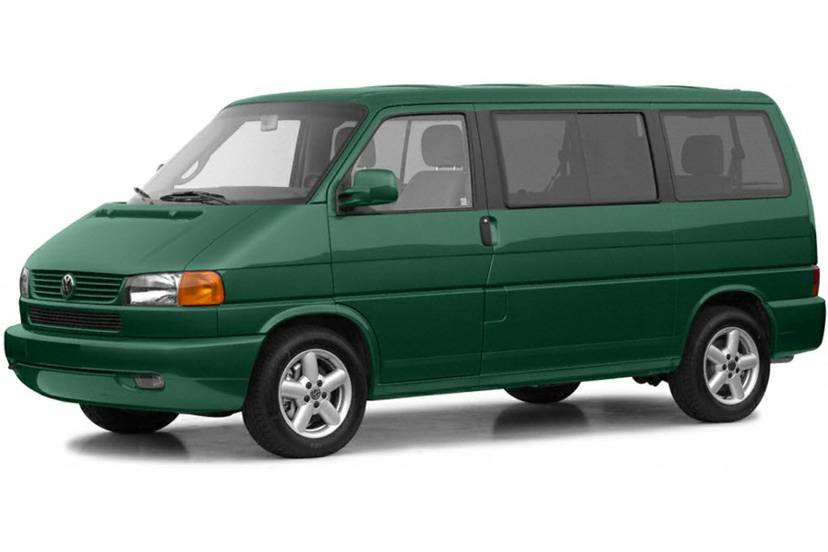
A Diesel That Delivers, for a Price
It was a motorized pencil. It went exactly where I pointed it, albeit slowly — 0 to 60 miles per hour in 13 seconds on a good day, a bit more slowly on a day of biting cold.
But once the 2003 Volkswagen Jetta GLS 1.9 TDI wagon got moving, it moved with authority. It also got up to 50 miles per gallon from its diesel engine.
Yes, diesel.
Get used to it. There is a chance that diesel-fueled cars, now 1 percent of the U.S. market for passenger vehicles, will make a comeback in the United States.
Diesels have changed radically over the past decade. They are cleaner and more fuel-efficient. At long last, diesel opponents are changing, too.
Alan Lloyd, chairman of the California Air Resources Board, says he’s willing to accept the new diesels as weapons in the fight for better fuel economy and cleaner air.
That’s the equivalent of a religious conversion. California owns 12 percent, the single largest share, of the U.S. market for new cars and trucks. Lloyd’s agency, as a result, is as influential as the federal Environmental Protection Agency in regulating mobile-source pollution.
Lloyd was one of the most vocal leaders of the anti-diesel campaign. His acceptance of advanced diesel technology could yield increased sales of diesel cars and trucks in the United States.
The 2003 Jetta GLS 1.9 TDI (Turbo Diesel Injection) is one of the new-generation diesels, but it’s not the newest. It uses microprocessors to individually meter and inject fuel into separate intake valves. But a more advanced diesel engine, the common-rail diesel, takes that technology a big step further.
The common-rail diesel uses a special port to feed all fuel-intake valves precisely at the same time. That means better efficiency, better fuel economy and fewer emissions.
But common-rail diesels require super-low sulfur-diesel fuel, which is difficult to find in the United States. So, for the moment, the less efficient, port-by-port, direct-injection diesels will have to do. But less efficient does not mean unworthy, as evidenced by the commendable performance of this week’s subject vehicle.
The true test of any car is how well it delivers the basics — ride, handling, acceleration, braking, comfort, safety, fun, affordability. The 1.9 TDI gets top marks in six of those categories — ride, handling, braking, comfort, safety and fun. It gets a below-average grade for start-from-stop acceleration, but an excellent mark for acceleration in lane changes and crash-avoidance maneuvers.
But the car gets a barely passing grade for affordability. The Jetta GLS 1.9 TDI wagon is nobody’s economy model. It’s a relatively pricey small automobile. But it’s easy to believe that it’s worth it.
Fit and finish are impeccable. Interior materials are as good as those found in bona fide luxury cars. The list of standard equipment, especially for safety equipment, is quite generous. It includes power-assisted disc brakes (vented front, solid rear), anti-locks at all four wheels, an electronic brake distribution system that sends braking pressure to each wheel based on vehicle load and balance, and side air bags for the driver and front passenger.
Comfort in this car is defined as much by what it doesn’t have as it is by what exists. For example, there is scant evidence of that rattle-rattle-rattle diesel-engine noise in the GLS 1.9 TDI. Diesel fumes don’t invade the passenger cabin largely because no dirty diesel fumes exit beneath it.
Some people might not see “fun” as a basic automotive need. I do. I don’t like boring cars, and the GLS 1.9 TDI is anything but boring. A slow starter, yes. But the little 90-horsepower buggy can boogie once it gets going on the open road; and because it can go so far on one gallon of diesel, it can boogie for long time between fill-ups. And that’s just fine with me.
Nuts & Bolts
Complaint: Unimpressive 0-to-60-mph acceleration.
Praise: Impressive in the long run. Kudos for superior fit and finish and the use of top-quality materials in the passenger cabin.
Ride, acceleration and handling: Poor start-from-stop. Overall good performance in highway-traffic acceleration. Good small-car ride. Superior small-car handling.
Head-turning quotient: Sophisticated. Looks richer than it is, and it flirts with being priced that way.
Capacities: Seats five people, four comfortably. Cargo capacity is 34 cubic feet with the rear seat up and 51.9 cu. ft. with the rear seat down. Fuel tank holds 14.5 gallons of diesel fuel.
Body style and layout: The GLS 1.9 TDI is a four-door wagon with a rear hatch. It is front-engine, front-wheel-drive.
Engine and transmission: The car is equipped with a 1.9-liter, in-line, four-cylinder, direct-injection, turbocharged engine that develops 90 horsepower at 3,750 revolutions per minute and 155 foot-pounds of torque at 1,900 rpm. The engine can be linked to a five-speed manual or an electronically controlled, four-speed automatic transmission.
Price as tested: Base price on tested wagon is $18,490. Dealer invoice price on that model is $17,220. Price as tested is $19,820, including $755 in options and a $575 destination charge.
Purse-strings note: Compare with Ford Focus ZTW wagon, Mazda Protege 5, Saturn LW200. Pontiac Vibe/Toyota Matrix crossover-utility vehicles (aka station wagons), and the Subaru Forester.






